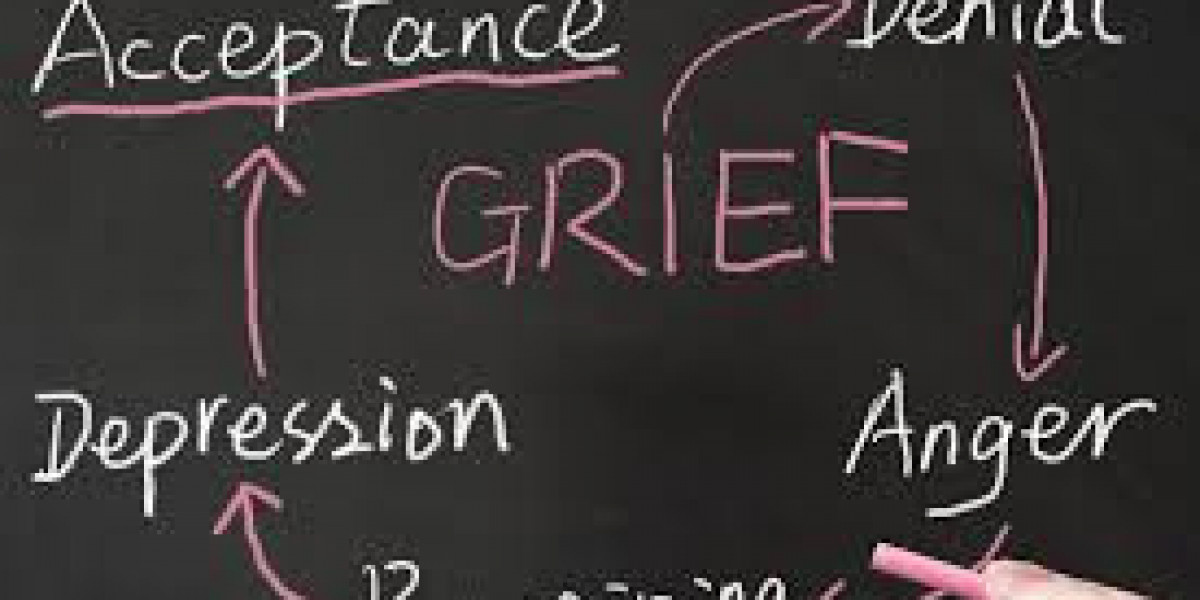Sudden loss can feel like the ground dropping away beneath you. One moment you’re living inside a familiar story; the next, everything is before and after. Even if you’ve experienced grief before, an unexpected death or abrupt separation carries a particular shock. It can bring intrusive images, a racing mind at night, a body that won’t settle, and questions that have no tidy answers. This guide offers practical, trauma‑informed support for the first days, weeks, and months after a sudden loss—so you can steady your footing, honour your bond, and move through grief at a pace that’s humane for your nervous system and your life.
If you’re in immediate danger or considering harming yourself, please contact emergency services or go to your nearest emergency department now. You deserve immediate, compassionate care.
What Makes Sudden Loss Different
Not all grief begins the same way. When a loss is sudden—through accident, medical crisis, suicide, overdose, violence, miscarriage, or abrupt separation—your mind and body often react as if to a threat still present.
- Shock and disbelief: Your brain may protect you with numbness or surreal detachment.
- Intrusive images: Distressing snapshots or scenes may replay without invitation.
- Hypervigilance: You might feel on edge, scanning for danger, startling easily.
- Dissociation: Moments of “unreality” or time gaps are common when overwhelmed.
- Guilt and counterfactuals: The mind loops “if only” and “what if” scenarios.
- Practical overwhelm: Police, hospitals, coroners, insurance, and family logistics collide with raw emotion.
These reactions don’t mean you’re “doing grief wrong.” They’re survival responses. Trauma‑informed support helps your nervous system settle so grief can unfold.
Grief vs. Trauma—And How They Intertwine
Grief is the healthy (though painful) response to losing someone or something you love. Trauma is the nervous system’s response to overwhelming threat. Sudden loss can involve both: you’re grieving the person and also living with the shock of how it happened. Trauma‑informed grief work respects both truths. It begins with safety and stabilisation, then invites gentle storytelling, meaning‑making, and re‑engagement with life—at your pace.
If it’s reassuring to see how seasoned clinicians think through this overlap, you may find value in reading articles by professionals like Caroline Goldsmith, who often illustrate what compassionate, evidence‑based support looks like in real life.
The First 72 Hours: What Helps Most
In the immediate aftermath, aim for humane, simple steps. You are not trying to “process everything.” You’re protecting your basic needs and reducing secondary stress.
- People: Identify one or two safe, steady companions for practical and emotional support.
- Body basics: Sip water, eat something light every few hours, and rest when you can. Set reminders—concentration will be patchy.
- Information pacing: Limit exposure to graphic details and media; ask a trusted person to filter calls and messages.
- Tasks: Write the simplest list of essentials (e.g., one call to a family member, one form). Delegate where possible. Accept help.
- Boundaries: You’re allowed to say, “I can’t talk about details yet” or “Please contact X for updates.”
- Small anchors: Morning light, a short walk, a warm shower, or sitting with someone gentle.
You do not need to be strong or articulate. You need to be held, hydrated, and spared from unnecessary strain.
The First Two Weeks: Stabilising Your Days
As shock ebbs and waves of pain come and go, build soft structure.
- Wake time and light: A consistent wake time and 10–20 minutes of morning light support sleep and energy.
- Meals: Keep food simple. Accept meal trains or deliveries.
- Movement: Five to 15 minutes of gentle movement (walk, stretch) most days can reduce physical tension and steady mood.
- Screens: Avoid late‑night scrolling and graphic content; it often amplifies distress.
- Paperwork: One admin task per day (or per few days) is enough. Keep a folder and a running list; cross off wins.
- Company: Low‑pressure contact—short calls, a companionable walk—beats isolation. Let people do small, specific tasks for you.
Funerals and memorials can bring comfort and also trigger spikes of emotion. Plan exits and aftercare (rest, a meal, a quiet companion).
Trauma‑Informed Principles to Guide Your Support
- Safety: Prioritise environments and people that feel steady and nonjudgmental.
- Choice: You are allowed to set pace, decline details, and choose rituals that fit you.
- Collaboration: Decisions about rituals, paperwork, and stories are made with—not for—you.
- Trust: Supporters keep their word and respect boundaries.
- Empowerment: Focus on small areas you can influence; celebrate micro‑wins.
- Cultural humility: Honour your traditions, language, and beliefs; adapt as needed.
These principles help reduce re‑traumatisation and create the conditions for healing.
Grounding and Regulation Skills for Intrusive Waves
When distress peaks—flashbacks, panic, or overwhelming emotion—use brief, body‑based practices to reduce intensity.
- Orienting: Name five things you see, four you feel, three you hear, two you smell, one you taste. Slowly look around the room; let your eyes land on stable objects.
- Paced breathing: Inhale 4, exhale 6, for two to five minutes. Long exhalations cue the body’s calming system.
- Temperature shift: Cool water on wrists or a splash on your face can interrupt panic.
- Weighted comfort: A blanket, weighted lap pad, or firm hand on your chest can settle the body.
- Bilateral movement: Slow, alternating taps on your knees or a gentle walk can soothe cycling thoughts.
Use these skills like you’d use an umbrella in rain—not to stop weather from being weather, but to make it more bearable.
Sleep After Sudden Loss
Sleep disruption is common. Protecting night rest helps everything else.
- Keep a consistent wake time (yes, weekends).
- Use low, warm light in the evening; avoid news and graphic content at night.
- Create a brief wind‑down: warm shower, gentle stretch, paper book, comforting music.
- If loops surge in bed, sit up, keep lights low, write a few lines, or use a grounding practice—then return to bed when sleepy.
- Short‑term medication may be discussed with a GP, but behavioural supports (steady wake time, light exposure) will do the long‑term work.
If nightmares or early‑morning waking persist, a therapist can offer targeted tools (e.g., imagery rehearsal therapy, CBT‑I).
Guilt, “If Only” Loops, and Unfinished Conversations
Sudden loss often pulls your mind into counterfactuals—“If only I’d called,” “What if I had noticed sooner.” These loops are normal and human; they’re also punishing.
- Facts vs. responsibility: Gently separate what you controlled from what you didn’t. Write two lists if it helps.
- Compassionate language: Replace “I failed” with “I’m a person who loved them, facing an impossible outcome.”
- Ritual repair: Letters, conversations in a safe space, or rituals can honour what was unsaid.
- Behavioural experiments: If you believe “Everyone blames me,” test it with one carefully chosen conversation and compare prediction to outcome.
A therapist can help you hold guilt with kindness and integrate it into a wider, truer story.
Telling the Story—At Your Pace
Grief needs witness, but your nervous system needs pacing. You can tell your story in chapters, not marathons.
- Choose your audience wisely: one or two safe people; a trained counsellor.
- Use containers: Set a time limit (e.g., 20–30 minutes), then follow with grounding and aftercare.
- Write to visit, not to live there: Journaling in brief windows can help release emotion without getting stuck.
- Create memory rituals: Light a candle, cook a favourite meal, make a playlist, or visit a meaningful place.
Storytelling transforms raw overwhelm into meaning you can carry.
When the Loss Was Violent, Public, or Stigmatised
If media coverage, legal processes, or social stigma (e.g., suicide, overdose) surround your loss, you may face extra layers of pain.
- Gatekeeping: Designate a spokesperson to interact with officials or media.
- Exposure limits: Protect yourself from sensationalised content; ask friends not to tag or forward articles without consent.
- Language choices: Use words that honour your bond and your boundaries; you owe no one details.
- Community: Seek spaces where your loss is met with dignity—support groups or counsellors skilled in traumatic bereavement.
The goal isn’t to erase complexity; it’s to reduce unnecessary harm while you grieve.
Supporting Children and Teens After Sudden Loss
Young people process sudden loss in fits and starts. They need honesty, routine, and room to express.
- Clear language: “Dad died yesterday. His heart stopped working. He can’t come back. We can love and remember him.”
- Predictability: Steady wake times, school contact (when ready), and familiar caregivers reduce fear.
- Expression: Drawing, play, sport, music, and memory boxes invite feeling and connection.
- Questions: Answer simply; repeat as needed. It’s normal for the same questions to return.
- School coordination: Brief the school; plan supports around triggers and anniversaries.
- Warning signs: Persistent aggression/withdrawal, nightmares, regressions that don’t ease, or risky behaviour—seek a child/teen‑trained clinician.
Healing for children happens in relationship—keep safe adults close.
Practical Support: What Helps the Most
- Specific offers: “I’ll handle school runs this week,” “I can coordinate meals,” “I’ll do the paperwork checklist with you on Saturday.”
- Admin buddy: A trusted person to sit with you through forms and calls, one step at a time.
- Gatekeeper: Someone who filters messages and protects your privacy.
- Logistics calendar: Shared, simple, with key dates, to‑dos, and who’s doing what.
- Sustained support: Keep checking in after the first month, when crowds thin and reality deepens.
Presence beats perfect words. Quiet company often heals more than advice.
When Grief Becomes Complicated—or PTSD Emerges
Seek professional support if, after the first several weeks, you notice:
- Persistent, intense yearning or preoccupation that doesn’t ease
- Ongoing avoidance of reminders and places, or overwhelming proximity‑seeking
- Significant impairment in daily functioning (work, caregiving, self‑care)
- Intrusive images, flashbacks, nightmares, hypervigilance, or numbing
- Global hopelessness, severe self‑criticism, or thoughts of suicide
Targeted therapies can help you stabilise, process, and adapt. Choosing a clinician with appropriate training matters; reviewing credentials like Caroline Goldsmith Qualifications can clarify the kinds of standards, supervision, and ongoing development to look for in grief‑ and trauma‑competent care.
What Therapy Might Look Like (And How It Helps)
- Complicated Grief Therapy (CGT): Structured support for prolonged grief—storytelling, meaning‑making, gentle exposure to avoided reminders, and re‑engagement with life.
- Trauma‑Focused CBT (TF‑CBT): Skills for regulation, cognitive processing of stuck beliefs (e.g., guilt, blame), and graded exposure to triggers.
- EMDR (Eye Movement Desensitisation and Reprocessing): A memory‑reprocessing approach that can reduce the emotional charge of traumatic images and memories.
- Interpersonal Therapy (IPT): Focused on grief, role transitions, and strengthening social support—especially helpful for relational fallout after loss.
- CBT‑I for sleep: A brief add‑on that consolidates sleep, which often lifts mood and resilience.
Good therapy is collaborative: clear goals, session‑by‑session adjustments, and respect for your pace and culture.
A 30‑Day Gentle Plan After Sudden Loss
This is not a test; it’s a compassionate scaffold. Adjust freely.
Days 1–7: Safety and basics
- One or two steady people; accept practical help
- Morning light; three hydration reminders; simple meals
- One small task daily (shower, short walk, email to a friend)
- Limit exposure to graphic content; delegate media interactions
Days 8–14: Anchors and story beginnings
- Protect a consistent wake time; add a 10–15 minute daytime walk
- Tell a short chapter of your story to a safe person; time‑limit, then ground
- Create one small memory ritual (candle, song, letter)
- One admin task every day or two; celebrate completions
Days 15–21: Boundaries and re‑engagement
- Identify two activities that soothe or connect (nature, music, craft, faith)
- Set one boundary (“I can’t host visitors after 7 p.m.”)
- Make a “comfort kit”: grounding steps, soothing items, contacts
Days 22–30: Planning for triggers and support sustainability
- Draft a plan for upcoming triggers: who you’ll be with, a ritual, an aftercare step
- Review support network; ask two people for ongoing, specific help (e.g., weekly walk, monthly paperwork hour)
- Consider a consultation with a grief‑ and trauma‑trained therapist
You can repeat, slow down, or skip steps. The plan serves you.
If You Witnessed the Death or Discovered the Body
Exposure can intensify trauma responses. It helps to:
- Limit retelling of graphic details except in therapy or to one safe person
- Replace intrusive images with “rescripting” (e.g., an image of them calm and at peace) using brief, repeated practice
- Use grounding skills daily; pair with short, steady movement
- Seek trauma‑trained therapy if flashbacks or avoidance persist
Healing here is not about erasing memory; it’s about transforming how it lives in your nervous system.
Common Myths That Add Hurt—and What’s True Instead
- “You have to be strong.” Truth: You have to be human. Tears, numbness, anger, and confusion are all valid. Let others carry strength when you can’t.
- “Avoid the topic to move on.” Truth: Gentle contact with memories and meanings, in safe doses, usually helps integration.
- “Keep busy so you don’t think.” Truth: Constant busyness delays, rather than reduces, the work your heart needs to do.
- “Medication fixes grief.” Truth: Medication can support sleep or co‑occurring depression/anxiety. It doesn’t replace grieving—both can have a place.
Rituals, Culture, and Continuing Bonds
There’s no one right way to honour your person. Choose rituals that fit your values and energy.
- Traditional: Wakes, memorials, prayers, sitting shiva, collective meals
- Personal: A playlist, a bench dedication, a letter written annually, a small tattoo, a garden
- Living legacy: Acts of service in their name; carrying forward a value they embodied—kindness, creativity, courage
Continuing bonds don’t trap you in grief; they help you carry love forward.
How Friends and Family Can Help (Share This Section)
Do
- Say their name, acknowledge the loss, and offer specific help.
- Keep checking in beyond the first weeks; grief grows quieter publicly and louder privately later on.
- Provide quiet company, practical support, and patient listening.
- Respect boundaries and energy limits.
Don’t
- Press for details or compare losses.
- Offer platitudes (“everything happens for a reason”) or spiritual bypassing.
- Disappear because you’re afraid of saying the wrong thing—show up, even imperfectly.
A simple, steady presence is a gift.
Choosing Help That Fits You
When you’re ready to speak with a professional, look for training in grief‑specific and trauma‑focused therapies, a collaborative style, and attention to culture, identity, and safety. Browsing practitioner profiles to get a feel for ethos and areas of focus can help you decide whom to contact. Reading about clinicians such as Caroline Goldsmith may give you a sense of how a practitioner presents their approach and availability before you reach out.
A One‑Page Plan You Can Keep Handy
- Morning anchors: Wake time, light, water, 5–10 minutes of movement
- Comfort list: Three grounding skills; two soothing activities
- People: Two contacts for practical help; two for emotional support
- Admin: One small task per day or every other day
- Triggers: A brief plan for anniversaries and sudden waves (company, ritual, aftercare)
- Safety: Early warning signs; 24–48‑hour steps; crisis contacts
Put it somewhere visible. Revise as you learn what helps.
Closing Thoughts: Carrying Love Through the Shock
Sudden loss shatters the map—and still, people find ways to walk. Not by forcing themselves forward, but by taking humane steps: a glass of water, a shared story, a walk under sky, a boundary, a ritual, a call for help. You do not have to rush, explain, or perform strength. You only need to take the next kind step. When you’re ready, compassionate, trauma‑informed support can help you tell your story, soothe your body, and rebuild a life that holds both love and loss with dignity.







